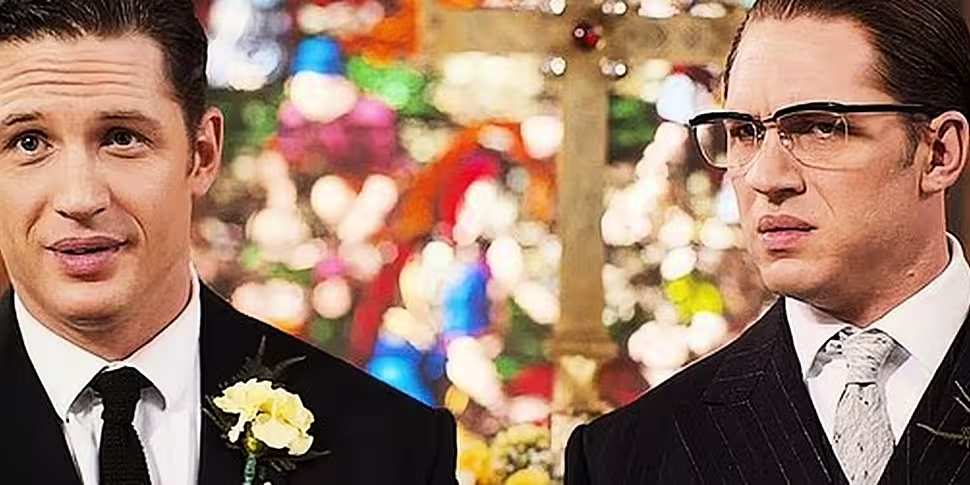Legend (18)
The main cinema release of the week is Brian Helgeland’s Legend, the story of the notorious gangster brothers, Ronnie and Reggie Kray in the south of London of the late ‘50s and ‘60s.
It is significantly different from the Peter Medek film The Krays in 1990 – the twins were played by Gary and Martin Kemp of Spandau Ballet and their mother, the late Billie Whitelaw, was portrayed as a much more forceful, and even violent influence on their lives.
Here the story is told from the perspective of Reggie’s girlfriend and young wife Frances Shea (the Australian actress Emily Browning), which allows for a more objective view of the brothers and their protective relationship.
Much of the better known history of the Krays and their gang The Firm is sewn into the fabric of the story – their competition with the violent Richardson gang, the attempts of the Mafia to move into London, political controversies like the homosexual scandal involving Tory peer Lord Boothby, and police inspector Jack “Nipper” Reed’s (Christopher Eccleston) obsession with the family.
But what makes it dramatically different from anything we have seen before is the casting of Tom Hardy in the dual role of the brothers. Ronnie was a psychopath and the story begins with an attempt to get him out of a mental hospital by bribing and threatening one of the doctors while Reggie was essentially the brains behind the operation, running The Firm and generally protecting his unhinged sibling.
And Hardy makes them seem like one character, and, at the same time, two different characters drawn to each other, struggling to protect and understand what they do and how they behave. He gives the story its edge, its personality and its inquiring sense in what is easily the fullest and most complete performance of his career.
In Cold Blood (Club)
A digital version of Richard Brooks’ black-and-white masterpiece In Cold Blood will go into the Irish Film Institute in Dublin on Friday. The movie, adapted by Brooks from the Truman Capote book, tells the story of two ex-cons, Perry Smith (Robert Blake) and Dick Hickock (Scott Wilson) who broke into the home of wealthy farmer Herb Clutter in west Kansas in November 1959 and murdered Clutter, his wife and two children. They had been told by a fellow convict that the farmer kept a wall safe at his home which was full of money.
Capote heard about the case and developed it as what he called “a non-fiction novel,” initially publishing it in four parts in the New Yorker magazine. The final part wasn’t published until the trial and conviction of Smith and Hickcock (they were both hanged).
When the story came out in book form it held the No 1 spot on the New York Times bestsellers list for 13 weeks and there was a major competition for the movies rights – the famous ‘Swifty’ Lazar was handling the sale and he was also Richard Brooks’ agent. When it was revealed that Columbia Pictures had bought the rights on Brooks’ behalf (Capote said he believed that Brooks wouldn’t sentimentalise the story) there was a bloody altercation between director Otto Preminger and Lazar at the 21 Club in New York.
Preminger accused Lazar of being dishonest in the way he handled the sales of the rights, Lazar’s wife slapped Preminger and when the director attempted to rise from his chair, Lazar smashed a glass into his forehead , opening up a wound that required over two dozen stitches.
Brooks decided against Paul Newman, Steve McQueen, and even Marlon Brando and decided to cast little known actors in the main parts. He cast David Carradine – son of John Carradine – as Dick Hickcock and instructed him not to tell anyone, including his agent, under any circumstances. He told him he wanted to announce the names of the two actors playing the killers together – but he heard later that Carradine was boasting about getting the plum job and sacked him before he began working on the film. Don Gordon – a Steve McQueen film regular – was about to be cast when Robert Blake’s name was mentioned to the director. A former child actor with a reputation for going to great lengths to appear convincing he did a test and took the part.
An actor called Scott Wilson was making his movie debut with Sidney Poitier in In The Heat of the Night and Poitier asked him if he had heard of In Cold Blood. “What’s that?” Wilson responded.
Poitier was so impressed with the actor he offered to speak to Brooks on his behalf and that opened the door for him (Brooks who was famous for doing thirty and forty takes for a scene tyrannised him throughout the movie).
Burt Lancaster, Lee Marvin and Henry Fonda were all mentioned for the role of the investigating detective Alvin Dewey- Lee J.Cobb is supposed to have begged Brooks for it until the director told him he was too expensive.
Eventually the part went to bland and likeable leading man, John Forsythe, who had been a success on the TV series Bachelor Father and had recently co-starred with Lana Turner in the remake of Madame X.
The film, much like its production story, fascinates.









